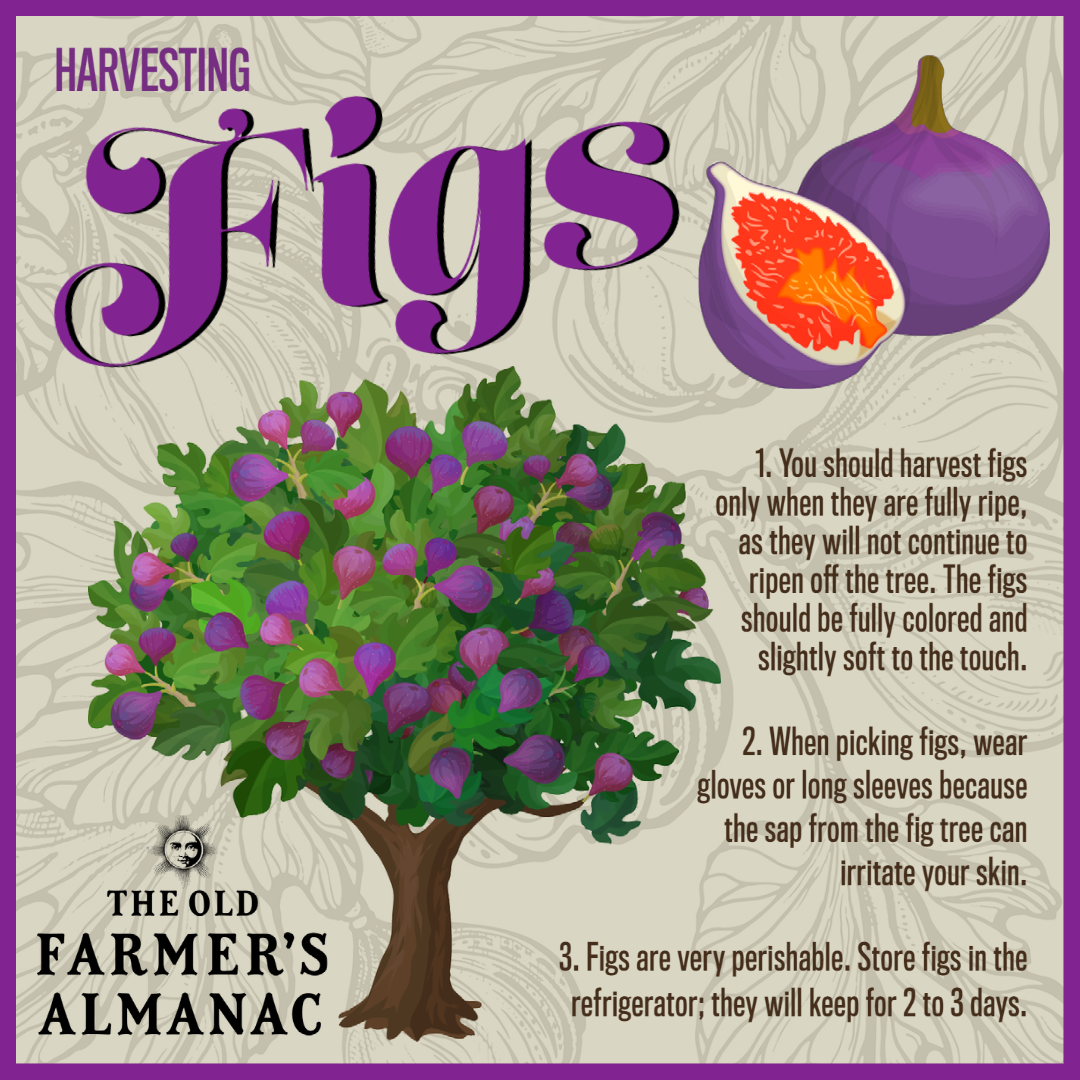
Planting, Growing, and Harvesting Figs
The Almanac Garden Planner - Use It Free for 7 Days!
Plan your 2025 garden with our award-winning Garden Planner.
Types
- ‘Brown Turkey’ produces abundant medium to large figs. This type works best in warm climates but is fairly tolerant of cooler temperatures, too.
- ‘Celeste’ produces small, sweet, purplish figs. It is one of the more winter-hardy varieties.
- ‘Hardy Chicago’ is a winter-hardy variety that produces purple, medium-size figs.
- ‘King’ is well adapted for the cooler conditions found in the Northwest. It produces medium figs that are sweet and rich in flavor.
- ‘Kadota’ vigorously produces small to medium fruit. Its figs are rich and sweet, and it is the most commonly canned fig.
ADVERTISEMENT
The best time to prune your fig trees is definitely in the winter (dormant season). When you prune a fig tree, you can indeed trim away half the tree (once it’s had its first winter outside). This allows the tree to focus on developing strong roots. After the second winter, cut everything except 5 or 6 strong new branches for the fruit to grow on. Removing any branches that are not growing out from your selected fruiting branches, as well as any dead or diseased wood. You find this video interesting: https://www.youtube.com/watch?v=xkN0fPx9Ens
Hello, I recently bought a home in Arizona that has a huge beautiful fig tree planted in the courtyard. There is gravel onto of the soil and pavers on one side. The tree fruits but they are all either green or dead looking brown hardened not good to taste. I love the tree and want to fix the problem. I notice when I water the tree it doesn’t seem to soak into the ground but rolls off and doesn’t water properly. Should I get rid of the gravel and plant grass? Remove the pavers? Any help you can give would be greatly appreciated! Thank you in advance. Janine
Your fig tree would likely benefit from the removal of the gravel and pavers, as it sounds like they’re preventing the tree from getting an adequate amount of water. Replace them with a light-colored bark mulch, which will hold moisture in the soil for longer.
When is it the best time to take cuttings. what sort of medium is best to plant in. I use hormone dust. Any suggestion you make would be appreciated.... Thank you
I have these big green wind beetles, devouring my figs, help!
Big green winged beetles
We recently moved to a new (different) house that has what we and everyone else who’s seen it has presumed to be a fig tree in the back. The fruit started to grow and they’re just starting to get ripe. They look and smell just like figs. I know this comes off as paranoid, but is there any other type of tree and fruit that is close to a fig that would be dangerous to eat? Another words, how can I be sure they’re figs and are ok to eat not having planted the tree myself?
Figs are fairly unique trees, so they should be easy to identify if you know what to look for! First look at the leaf: it should be quite large and have three to five lobes. Then look at the fruit: the color of the ripe fruit depends on the variety, but they may range from lime green to brown to purple. The stems of the fig fruit are fairly thick (not thin, like an apple or pear’s stem). Search in Google for images of fig leaves and see how yours compare. Finally, if you want to be absolutely sure, contact your local state Cooperative Extension Service, which should be able to ID the tree with a photo.
I live in D/FW area and have a brown turkey fig tree. Ants invade the fruit at the blossom end. Lately it has stopped, but I think that's because of a little lizard/gecko type thing. If the ants return, any suggestions on how to remedy the situation?
Hi Heather,
If the ants return, try sprinkling diatomaceous earth or broken eggshells around the base of the tree. It’s a simple solution and should cut up the ants as they pass through to climb the tree. We hope this helps!












